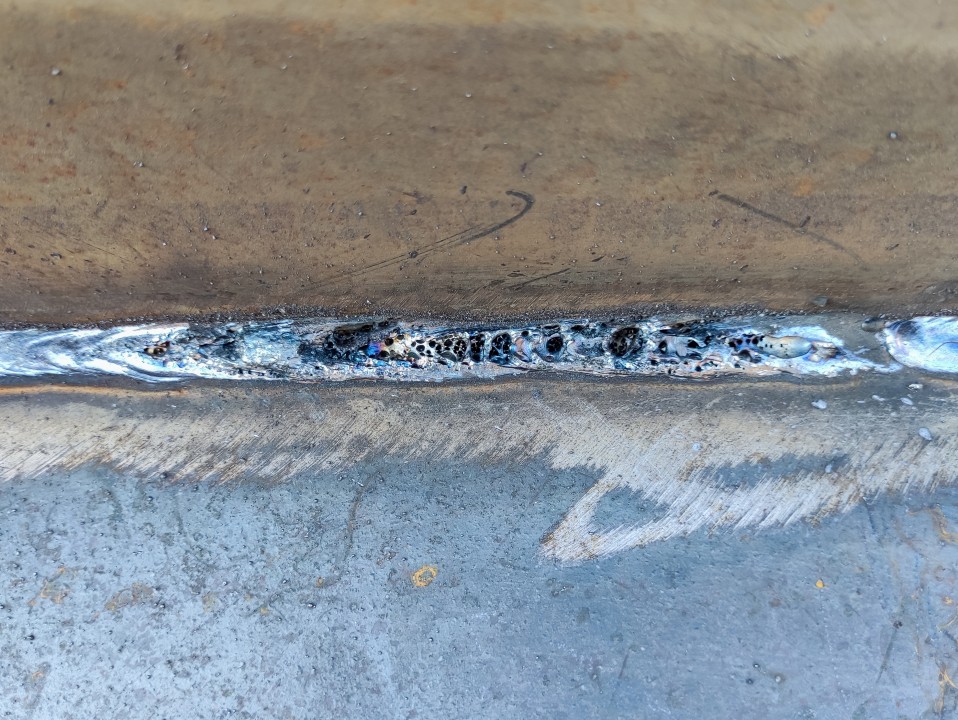Comprehensive Guide: What is Porosity in Welding and Exactly How to avoid It
Comprehensive Guide: What is Porosity in Welding and Exactly How to avoid It
Blog Article
Untangling the Mystery of Porosity in Welding: Tips for Lessening Problems and Maximizing Quality
In the complex globe of welding, porosity remains a consistent difficulty that can considerably affect the high quality and integrity of bonded joints. As we delve right into the midsts of porosity in welding, revealing the keys to its avoidance and control will be paramount for experts looking for to master the art of high-quality weldments.
Understanding Porosity in Welding
Porosity in welding, a typical concern run into by welders, refers to the visibility of gas pockets or spaces in the bonded material, which can endanger the stability and high quality of the weld. These gas pockets are normally caught throughout the welding process due to numerous elements such as improper protecting gas, contaminated base products, or incorrect welding criteria. The formation of porosity can deteriorate the weld, making it susceptible to splitting and corrosion, eventually causing structural failures.
By recognizing the significance of preserving correct gas securing, ensuring the cleanliness of base materials, and maximizing welding settings, welders can substantially lower the possibility of porosity formation. In general, a thorough understanding of porosity in welding is essential for welders to produce top notch and resilient welds.

Usual Reasons For Porosity
When examining welding procedures for prospective high quality problems, understanding the usual reasons of porosity is necessary for maintaining weld honesty and avoiding structural failings. Porosity, characterized by the existence of dental caries or voids in the weld metal, can dramatically endanger the mechanical residential or commercial properties of a welded joint.
One more widespread reason of porosity is the existence of moisture and impurities on the surface area of the base metal or filler product. When welding materials are not correctly cleansed or are revealed to high levels of moisture, the evaporation of these pollutants during welding can produce voids within the weld grain. In addition, welding at inappropriate criteria, such as exceedingly high traveling speeds or currents, can generate excessive turbulence in the weld swimming pool, capturing gases and triggering porosity. By dealing with these common causes via correct gas protecting, material preparation, and adherence to optimum welding parameters, welders can decrease porosity and improve the high quality of their welds.
Methods for Porosity Prevention
Carrying out effective precautionary procedures is critical in lessening the event of porosity in welding procedures. One technique for porosity avoidance is guaranteeing correct cleansing of the base steel prior to welding. Impurities such as oil, oil, corrosion, and paint can bring about porosity, so thorough cleansing making use of suitable solvents or mechanical approaches is necessary.

An additional trick precautionary procedure is the choice of the best welding consumables. Utilizing premium filler materials and protecting gases that appropriate for the base metal and welding procedure can considerably minimize the risk of porosity. Website Furthermore, preserving appropriate welding parameters, such as voltage, existing, take a trip rate, and gas flow rate, is vital for porosity prevention. Departing from the advised setups can result in incorrect gas protection and poor fusion, resulting in porosity.
Moreover, employing appropriate welding methods, such as preserving a regular travel rate, electrode angle, and arc length, can help stop porosity (What is Porosity). Appropriate training of welders to guarantee they adhere to finest methods and quality assurance treatments is additionally important in minimizing porosity flaws in welding

Ideal Practices for Quality Welds
Making sure adherence to market criteria and appropriate weld joint prep work are fundamental aspects of achieving consistently high-quality welds. In addition to these foundational steps, there are several ideal methods that welders can apply special info to additionally enhance the quality of their welds. One key practice is maintaining appropriate cleanliness in the welding location. Contaminants such as oil, oil, rust, and paint can negatively influence the high quality of the weld, leading to issues. Extensively cleaning up the work surface and bordering location before welding can assist mitigate these problems.
An additional finest practice is to carefully select the proper welding criteria for the particular products being signed up with. This includes setting the right voltage, existing, travel speed, and securing gas circulation price. Correct parameter my sources selection makes sure optimal weld infiltration, combination, and overall high quality. Making use of top notch welding consumables, such as electrodes and filler metals, can dramatically affect the final weld quality. Buying premium consumables can lead to more powerful, a lot more sturdy welds with less issues. By complying with these ideal methods, welders can consistently produce premium welds that satisfy market requirements and surpass client expectations.
Relevance of Porosity Control
Porosity control plays a vital duty in ensuring the integrity and high quality of welding joints. Porosity, characterized by the presence of dental caries or spaces within the weld metal, can significantly endanger the mechanical buildings and architectural honesty of the weld. Too much porosity weakens the weld, making it more susceptible to splitting, deterioration, and total failing under operational tons.
Efficient porosity control is necessary for maintaining the desired mechanical residential properties, such as strength, ductility, and strength, of the bonded joint. What is Porosity. By lessening porosity, welders can enhance the total top quality and reliability of the weld, making certain that it fulfills the performance demands of the desired application
Furthermore, porosity control is crucial for attaining the desired visual look of the weld. Excessive porosity not just weakens the weld yet likewise diminishes its visual charm, which can be essential in industries where looks are very important. Appropriate porosity control strategies, such as using the appropriate protecting gas, controlling the welding criteria, and guaranteeing appropriate sanitation of the base products, are important for creating top notch welds with marginal defects.

Conclusion
In conclusion, porosity in welding is an usual flaw that can endanger the top quality of the weld. It is essential to control porosity in welding to guarantee the stability and toughness of the final product.
Report this page